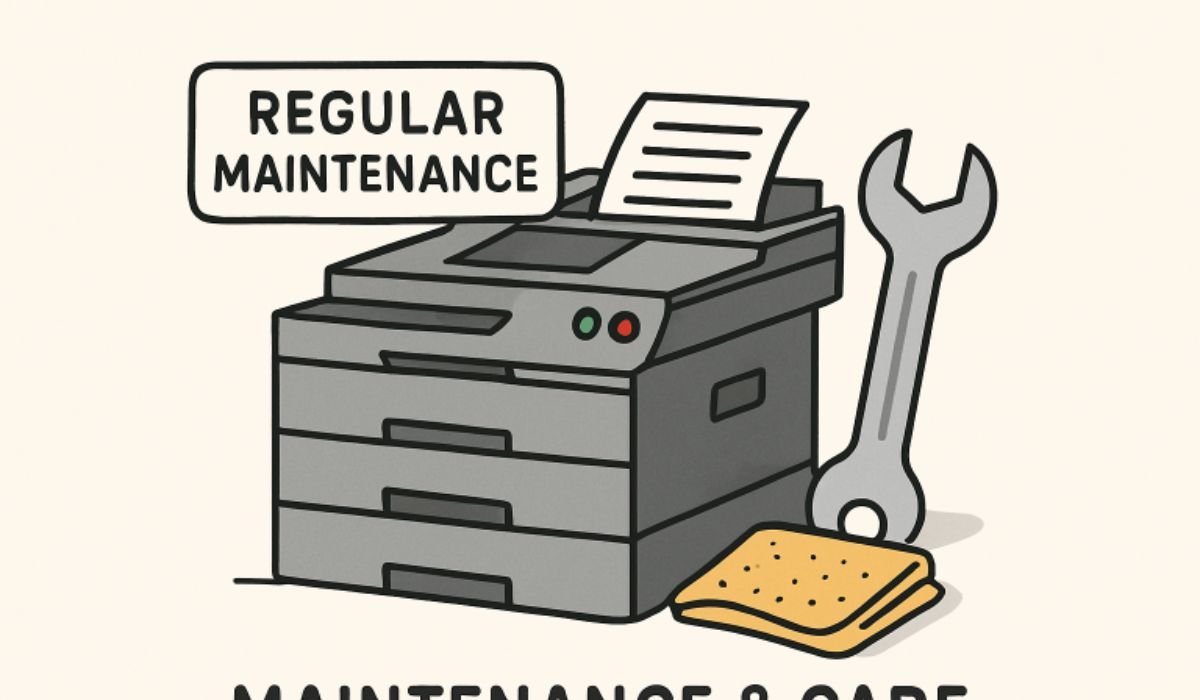Key Takeaways
- Proactive maintenance reduces unexpected repairs and extends the printer’s lifespan.
- Monitoring supplies and training employees significantly impacts reliability.
- Leveraging technology and building relationships with repair services streamlines issue resolution.
Introduction
Office printers are crucial for business productivity, but often get overlooked until a critical failure disrupts workflows and budgets. Proactive and consistent printer maintenance is essential to minimize unexpected downtime, ensure documents are always accessible when needed, and avoid surprise repair expenses. Partnering with efficient solutions like Everworx enables businesses to maximize uptime, safeguard investments, and maintain daily operations without interruption.
Instilling robust maintenance habits not only prevents the inconvenience of frequent breakdowns but also supports sustainability by extending the life of your print hardware. Well-maintained printers use fewer resources, waste less paper, and deliver better print quality, contributing to cost savings and workplace efficiency.
Beyond the physical upkeep of devices, successful printer management includes understanding modern monitoring technologies, supply logistics, and the value of professional support. By prioritizing maintenance, companies see fewer emergencies and optimize the performance of every print job.
Regular Cleaning and Servicing
Dust, debris, and paper fragments are the leading culprits behind printer malfunctions. Routine cleaning removes these hazards at least once a month and keeps printers in peak condition. Pay special attention to rollers, trays, and print heads, as neglecting these components leads to paper jams, poor print quality, and increased wear.
Use compressed air or lint-free cloths to clear hard-to-reach areas, and never underestimate the impact of a scheduled maintenance session, even for seemingly minor issues. Regular servicing is especially important in high-usage environments, where build-up can happen quickly.
Monitoring Consumable Levels
Running out of toner or ink at a critical moment can bring productivity to a grinding halt. Implement a system to monitor ink and paper supplies—many modern printers offer tracking features and low-supply alerts through their software interfaces. For larger fleets, managed print services can automate resupply, ensuring you’re never caught off guard.
Additionally, tracking usage patterns helps you order supplies more efficiently and prevents unnecessary surplus or shortfalls. By using monitoring tools, teams can focus on their work and minimize operational interruptions.
Employee Training
A knowledgeable workforce is an often-overlooked layer of preventive maintenance. Employees trained in the correct way to load paper, change toner, address common error codes, and resolve jams are less likely to cause issues inadvertently. Regularly scheduled workshops or quick-start guides displayed near printing stations reinforce best practices and decrease user-induced breakdowns.
Staff should also understand the boundaries of their troubleshooting abilities and know when to escalate to IT or a professional service provider. Ongoing education keeps everyone engaged in the health and longevity of shared devices, a strategy proven to reduce downtime across organizations.
Utilizing High-Quality Supplies
Subpar toner, generic cartridges, or low-grade paper can introduce dust and leave residue, causing irreversible damage to sensitive printer parts. Always investing in manufacturer-approved or trusted third-party supplies reduces the risk of jams, streaks, and print failures. High-quality materials provide consistent results, cost less over time by reducing repairs, and prevent unnecessary wear on the machine’s internal components.
Another bonus is environmental sustainability: reliable supplies typically produce less waste and offer recycling programs supporting corporate responsibility efforts.
Implementing Preventive Maintenance
Scheduled preventive maintenance is more efficient and less costly than repairs after a catastrophic failure. Designate quarterly or biannual check-ups for professional inspection of internal components, firmware updates, and calibration. This approach identifies worn parts before they fail and addresses trouble spots proactively, keeping repair costs and downtime to a minimum. Preventive maintenance isn’t just for older equipment; even new printers benefit as patterns of use emerge and minor issues can be corrected early.
Leveraging Technology for Monitoring
Modern managed print solutions offer software that tracks print volumes, supply levels, and service alerts in real time. Diagnostic tools can flag abnormal patterns—such as repeated jams or low print quality—before they result in bigger failures. Remote monitoring allows IT teams to correct errors and manage firmware updates efficiently across multiple locations.
Embracing these technologies speeds up troubleshooting and provides insights for data-driven decisions about printer replacement or upgrades.
Establishing a Relationship with Professional Repair Services
Even with the best care, professional repair services remain essential for complex issues. Aligning with a reputable provider ensures swift, expert diagnosis and repair when you need support beyond simple troubleshooting. Building a relationship in advance accelerates response time if a printer fails, keeping your operations running smoothly and minimizing the cost and disruption of downtime.
Choose a repair service that is familiar with your printer models and responsive to urgent needs. Many providers can offer preventive contracts, routine checkups, or remote diagnostics as part of a complete solution.
Final Thoughts
Proactive, structured printer maintenance delivers lasting benefits: less downtime, reduced repair costs, and increased efficiency for your entire team. For best results, regularly clean hardware, monitor supplies, train staff, use quality consumables, schedule preventive checks, leverage technology, and secure a professional service partnership. Small investments in care result in big wins for productivity and workplace satisfaction.

